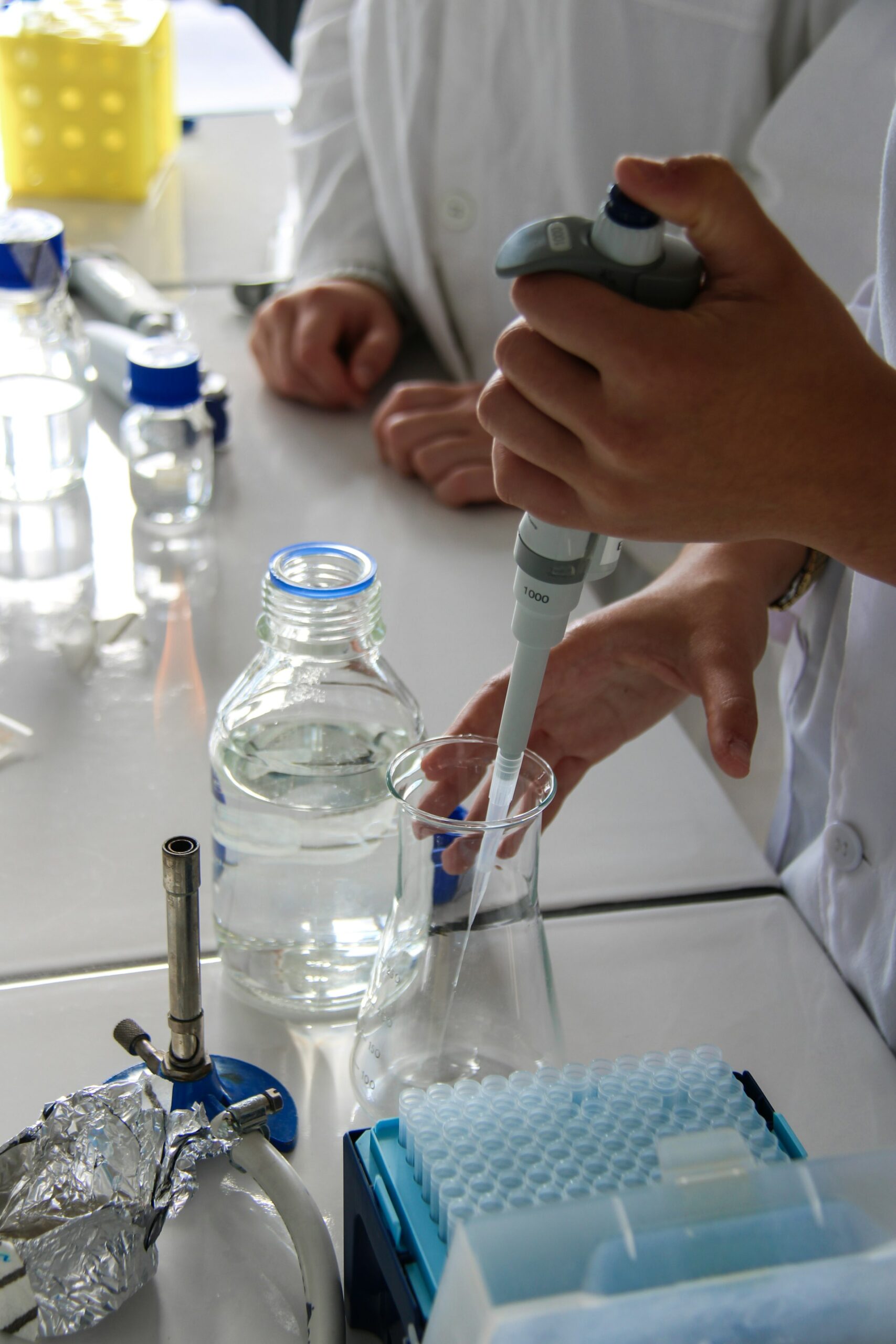Advancing Sustainable Semiconductor Materials: Research, Opportunities, and Actionable Steps

Photo by Rodrigo Araya on Unsplash
Introduction
The global demand for semiconductor devices continues to accelerate, powering everything from consumer electronics to renewable energy systems and electric vehicles. However, traditional semiconductor manufacturing is energy-intensive and contributes significantly to carbon emissions, water use, and electronic waste. Sustainable semiconductor materials research is emerging as a crucial area to address these challenges, offering new pathways for eco-friendly manufacturing, improved device performance, and reduced environmental impact [2] .
Key Innovations in Sustainable Semiconductor Materials
Material science is at the heart of advancing sustainability in the semiconductor industry. Recent breakthroughs include the development of multielement ink , which enables lower-temperature manufacturing and reduces overall energy consumption. This technology leverages high-entropy semiconductors and crystalline halide perovskites, paving the way for less heat-intensive and more sustainable production processes [2] .
New research also focuses on bio-sourced polymers such as Priamine, derived from naturally occurring fatty acids. Collaborative projects between industrial leaders like Cargill Bioindustrial and academic institutions such as Arizona State University are investigating how plant-derived materials can improve performance and sustainability while maintaining economic competitiveness [5] .
Wide-bandgap materials including Gallium Nitride (GaN) and Silicon Carbide (SiC) , as well as advanced nanomaterials like graphene and transition metal dichalcogenides (TMDs), are being used to enhance energy efficiency, reduce power consumption, and improve device longevity [4] .
Industry Collaboration and Investment Opportunities
Transforming sustainable semiconductor research into scalable solutions requires robust collaboration and substantial investment. The Semiconductor Research Corporation (SRC) is driving academic and industrial partnerships focused on developing abatement techniques to address process gases with high global warming potential (GWP), removing PFAS chemicals, and conserving natural resources [1] .
Funding remains a critical bottleneck. While the SRC ESH portfolio and its member companies are investing in university-led research, experts estimate that a 50-fold increase in funding is necessary to bridge the gap from lab-scale innovation to full-scale development. The recently announced PRISM program is an example of targeted investment, offering up to $35 million in awards for research focused on PFAS analysis, sensing, abatement, and modeling. Individual awards range from $250,000 to $8 million, providing substantial support for promising projects [3] .

Photo by Sirius Harrison on Unsplash
For organizations or researchers seeking funding:
- Review current research initiatives and grant opportunities through the official SRC website or contact their sustainability program office.
- Collaborate with industrial partners or academic institutions actively engaged in sustainability research, such as Arizona State University’s Biodesign Institute.
- Search for federal and state funding opportunities using keywords like “semiconductor sustainability grants,” “PFAS abatement funding,” and “green materials research” on official government agency websites (such as NSF or DOE).
- Consider joining industry consortia like the Semiconductor Climate Consortium for access to shared resources and pre-competitive research opportunities.
Practical Steps to Access Sustainable Semiconductor Resources
To participate or benefit from sustainable semiconductor materials research, consider the following actions:
- Identify Relevant Research Programs : Explore ongoing projects in academic institutions (such as Arizona State University or UC Berkeley) and major research consortia (SRC, SCC) to find opportunities for collaboration or technology transfer [1] [2] .
- Apply for Funding : Visit the official SRC website for current calls for proposals, or search for the PRISM program and other initiatives offering grants for sustainability-focused research. If links are unavailable, contact the SRC sustainability program directly for application instructions.
- Engage with Bio-Based Material Providers : Reach out to organizations like Cargill Bioindustrial to inquire about partnership opportunities for integrating plant-derived polymers into semiconductor manufacturing. Researchers can collaborate with local universities (e.g., ASU’s Biodesign Institute) for joint projects.
- Implement Energy-Efficient Materials : Semiconductor manufacturers can transition to wide-bandgap materials (GaN, SiC) and advanced nanomaterials to reduce energy consumption and extend device lifespan. Industry professionals should consult with material science experts or search for best practices on sustainability forums and official academic channels.
- Monitor and Mitigate Environmental Impact : Adopt abatement systems and alternative gases with low GWP to minimize greenhouse gas emissions. Collaborate with consortia focused on PFAS removal and resource conservation, and stay informed about regulatory changes by subscribing to updates from recognized industry bodies.
Challenges and Solutions in Scaling Sustainable Materials
Despite promising advances, several challenges remain in making sustainable semiconductor materials mainstream:
- Funding Gaps : Academic research often struggles to secure the level of investment required for commercialization. Coordinated efforts among industry, government, and academia are needed to increase funding and support large-scale pilot projects [3] .
- Technical Barriers : New materials must meet stringent performance and reliability standards. Researchers are addressing these by analyzing structure-property relationships and optimizing synthesis methods-for example, the ASU-Cargill project on Priamine [5] .
- Regulatory and Market Acceptance : Adoption of sustainable materials depends on regulatory approval and market demand. Industry consortia and advocacy groups are working to educate stakeholders and promote standards for green manufacturing.
- Supply Chain Integration : Transitioning to new materials and processes requires changes across the supply chain. Companies can start by piloting new materials in select product lines and sharing results with industry peers.
Solutions include increased collaboration, continuous investment in R&D, and transparent reporting of sustainability metrics to build confidence among customers and regulators.
Alternative Approaches and Future Directions
Organizations unable to access direct funding or partnerships may explore alternative routes:
- Participate in open-source research initiatives and knowledge-sharing platforms hosted by academic or industry groups.
- Utilize established materials with proven energy efficiency (such as GaN and SiC) while monitoring advancements in bio-based polymers and multielement inks for future adoption.
- Advocate for increased sustainability investments by joining industry forums and contributing to policy discussions.
Looking ahead, the industry is expected to see greater integration of machine learning for materials discovery, expansion of collaborative R&D models, and growth in public-private funding for sustainability projects. Staying informed about new programs and actively engaging with leading research organizations will be critical for success.
References
- [1] Semiconductor Research Corporation (2024). Commitment to Sustainability and Industry Collaboration.
- [2] Berkeley Lab News Center (2023). Accelerating Sustainable Semiconductors With ‘Multielement Ink’.
- [3] Semiconductor Research Corporation (2024). Sustainability Initiatives and PRISM Program.
- [4] Noah Chemicals Blog (2025). Material Science Contributions to Semiconductor Sustainability.
- [5] Arizona State University News (2025). Study on Plant-Derived Materials for Sustainable Semiconductors.
MORE FROM searchhole.com













